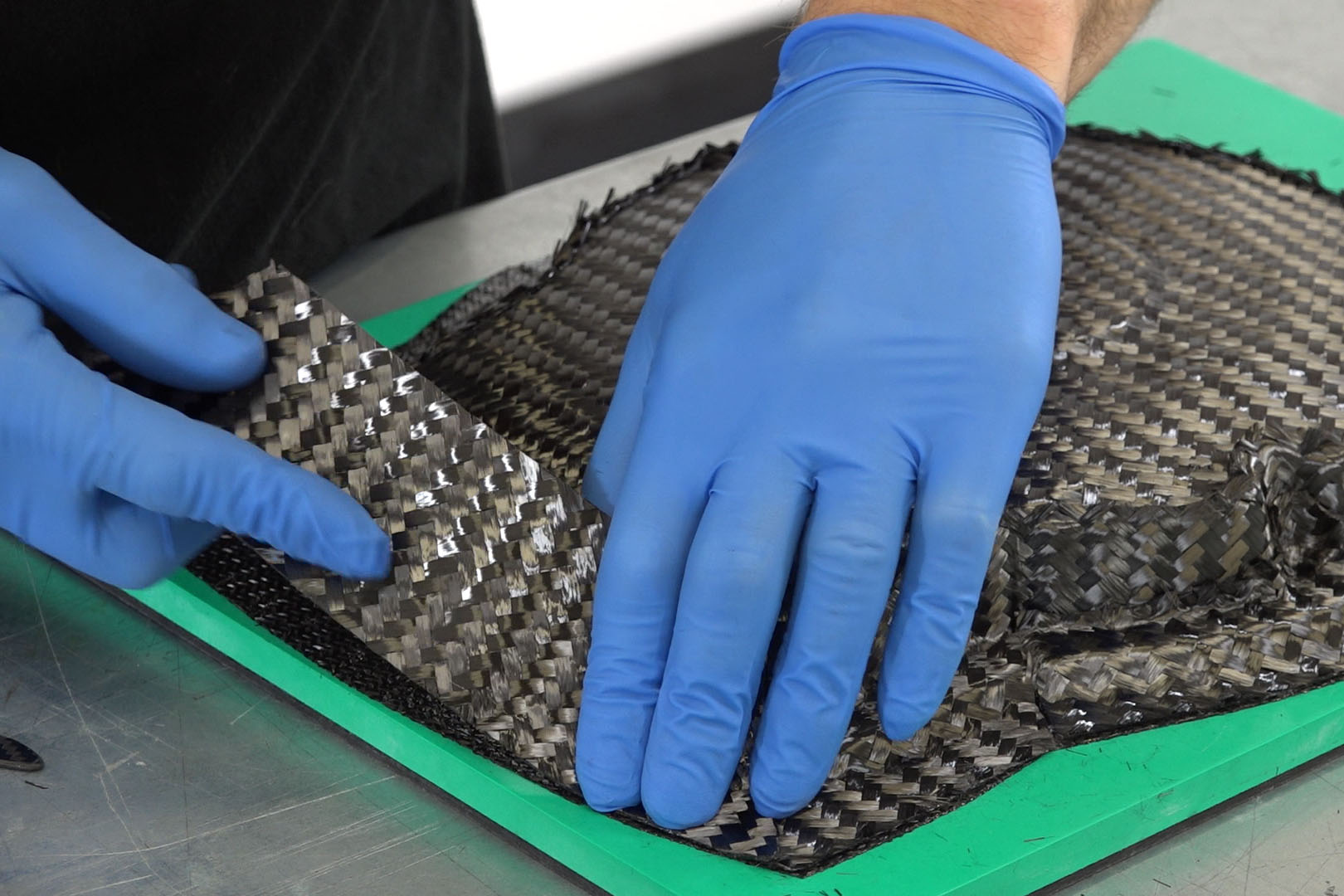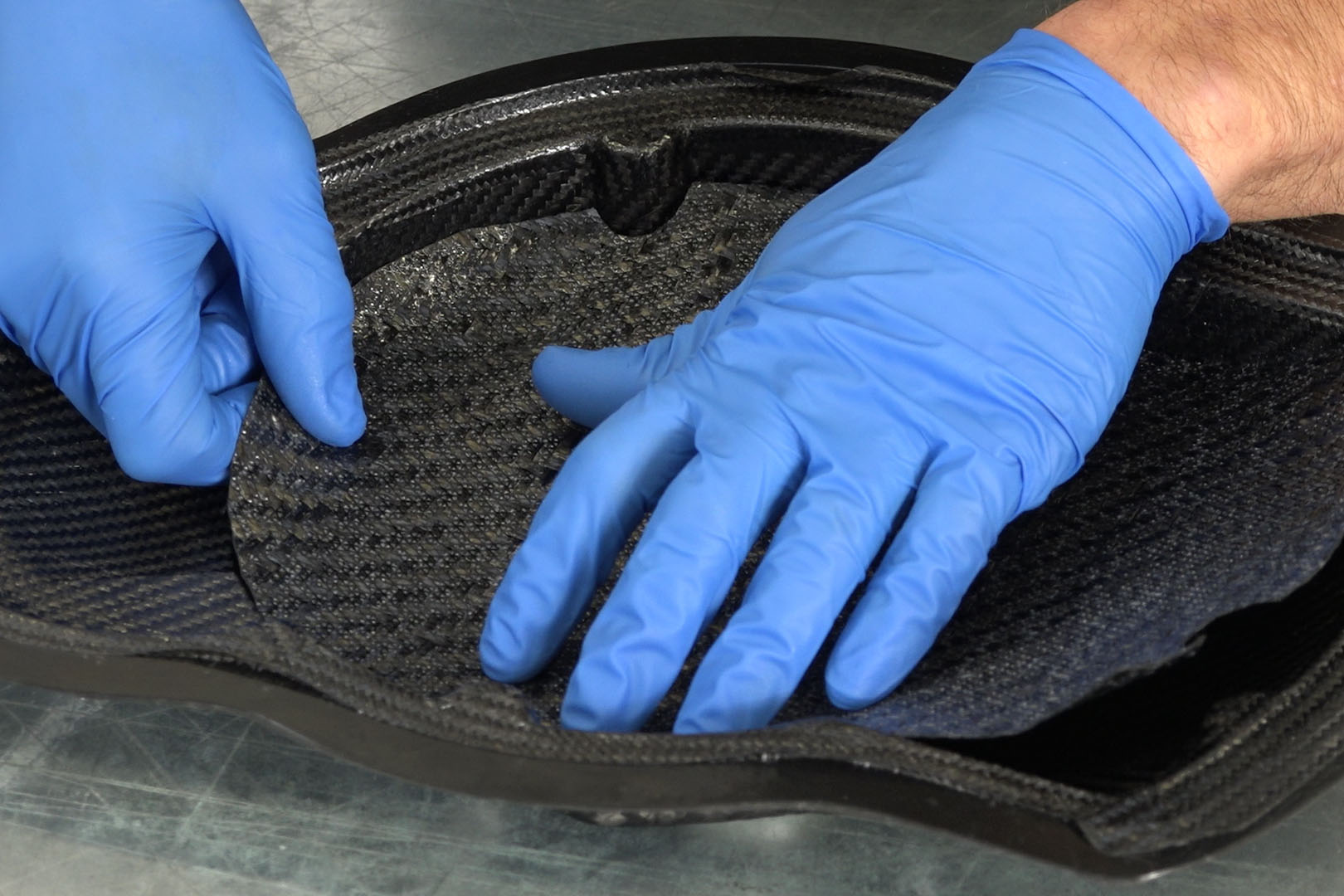Heb je hulp of advies nodig?+44 (0)1782 454499
VIDEO'S IN DEZE SERIE
Deze video is deel 1 van een serie in 3 delen:PRODUCTEN GEBRUIKT IN DIT PROJECT
Hoewel dit niet per se een uitputtende lijst is, werden de volgende gereedschappen en materialen, geleverd door Easy Composites, in dit project gebruikt.
De hoeveelheid die hieronder wordt weergegeven, is de geschatte hoeveelheid die in het project wordt gebruikt, afgerond naar de dichtstbijzijnde beschikbare kitgrootte of hoeveelheid.
MATERIALEN & VERBRUIKSARTIKELEN
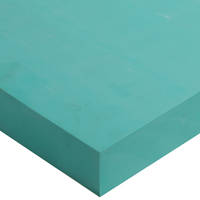
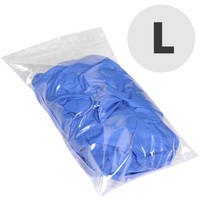
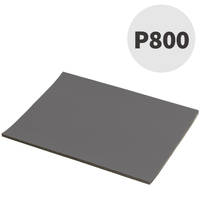
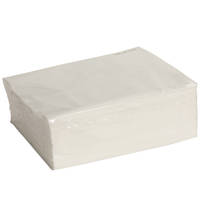
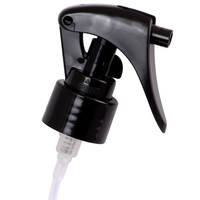
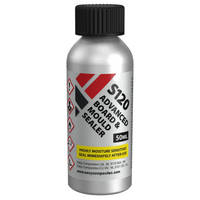
VIDEO HANDLEIDING
CNC Verspanen van 3D CAD Patronen en Mallen uit Epoxy Tooling Board
Video tutorial die demonstreert hoe een 3D CAD ontwerp bewerkt kan worden uit epoxy tooling board op een CNC freesmachine om een zeer nauwkeurig patroon of mal te maken. Inclusief het met de hand afwerken, sealen en glanzen van het patroon met S120 board sealer.
In de tutorial gebruiken we een desktop CNC frees om een blok van onze EB700 Epoxy Tooling Board te frezen. Het oorspronkelijke 3D-ontwerp is gemaakt in het CAD-programma Fusion360 van Autodesk.
Als de bewerking klaar is, gebruiken we 800 grit Mirka schuurpapier om het oppervlak van het patroon glad te maken. Daarna spuiten we vier lagen S120 Advanced Board & Mould Sealer voordat we het oppervlak weer vlak maken met meer schuurpapier korrel 800 voordat we het patroon op hoogglans brengen met vier lagen S120 Board Sealer.
UITSPLITSING TUTORIAL
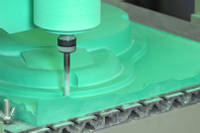
1. CNC-bewerking
Het ontwerp werd getekend met Fusion 360 voordat het CNC werd gesneden met een desktop CNC-router. Voor toepassingen als deze was de 6 mm frees ideaal en deze sneed de plaat gemakkelijk. Nadat de eerste grove zaagsneden waren gemaakt, werden de afwerkingssneden gemaakt met een stap van 0,25 mm om een goede algemene afwerking te garanderen.
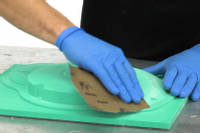
2. Handmatige afwerking
Het bewerkingsproces laat zeer kleine bewerkingssporen achter op het oppervlak van het patroon. Deze moeten worden gladgemaakt door het patroon met de hand af te werken met schuurpapier tot de afwerking glad is. Voor het sealen moet je het stof goed afnemen met een doek.
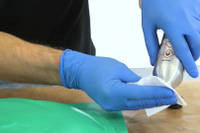
3. Plankverzegeling
Deze fase is bedoeld om het oppervlak van het patroon te verzegelen en tot een perfecte hoogglans te brengen, klaar om de mal uit te nemen. In eerste instantie worden lagen S120 Board sealer aangebracht met behulp van de sproeikop om te helpen afdichten en een egale laag op te bouwen. Er zijn tussen de 3 en 5 lagen nodig voor een typische epoxyplaat.
Nadat de 4e laag enkele uren heeft kunnen drogen, kun je de afwerking van de plank met schuurpapier denibben en gladmaken. Eenmaal glad wordt de laatste laag aangebracht met een pluisvrije doek voordat de sealer droogt. Eenmaal uitgehard kan het patroon worden nagehard in de oven om het klaar te maken voor het maken van de mal.
DISCUSSIE (12)
Laat het ons weten als je vragen of opmerkingen hebt over deze videotutorial.
Ja, je zou ook een dunne laag hars kunnen gebruiken om het board af te dichten als je geen specifieke boardsealer (zoals S120) wilt gebruiken. Hars zal iets dikker worden en daarom iets meer vlak moeten worden gemaakt om een vlak, nauwkeurig oppervlak te krijgen. Een goede keuze zou onze XCR Epoxy Coating Hars zijn - het wordt dun aangebracht, hardt snel uit tot een hoogglans en is goed polijstbaar. De verwerkingstemperatuur van de XCR is lager dan die van de boardsealer, maar het is nog steeds prima te gebruiken tot 80°C.
Bekijk onze uitleg over het vacuüm verpakken van een gesplitste koolstofvezel buiscomponent, ik denk dat dit precies is wat je zoekt!
LAAT EEN OPMERKING OF VRAAG ACHTER
PRODUCTEN GEBRUIKT IN DIT PROJECT
Hoewel dit niet per se een uitputtende lijst is, werden de volgende gereedschappen en materialen, geleverd door Easy Composites, in dit project gebruikt.
De hoeveelheid die hieronder wordt weergegeven, is de geschatte hoeveelheid die in het project wordt gebruikt, afgerond naar de dichtstbijzijnde beschikbare kitgrootte of hoeveelheid.
MATERIALEN & VERBRUIKSARTIKELEN






DISCUSSIE (12)
Laat het ons weten als je vragen of opmerkingen hebt over deze videotutorial.
Ja, je zou ook een dunne laag hars kunnen gebruiken om het board af te dichten als je geen specifieke boardsealer (zoals S120) wilt gebruiken. Hars zal iets dikker worden en daarom iets meer vlak moeten worden gemaakt om een vlak, nauwkeurig oppervlak te krijgen. Een goede keuze zou onze XCR Epoxy Coating Hars zijn - het wordt dun aangebracht, hardt snel uit tot een hoogglans en is goed polijstbaar. De verwerkingstemperatuur van de XCR is lager dan die van de boardsealer, maar het is nog steeds prima te gebruiken tot 80°C.
Bekijk onze uitleg over het vacuüm verpakken van een gesplitste koolstofvezel buiscomponent, ik denk dat dit precies is wat je zoekt!
LAAT EEN OPMERKING OF VRAAG ACHTER
100% BEVEILIGD
BETALINGSMETHODEN
Easy Composites EU B.V., geregistreerd in Nederland 73601195. Alle inhoud auteursrechtelijk beschermd (C) Easy Composites Ltd, 2025. Alle rechten voorbehouden.
